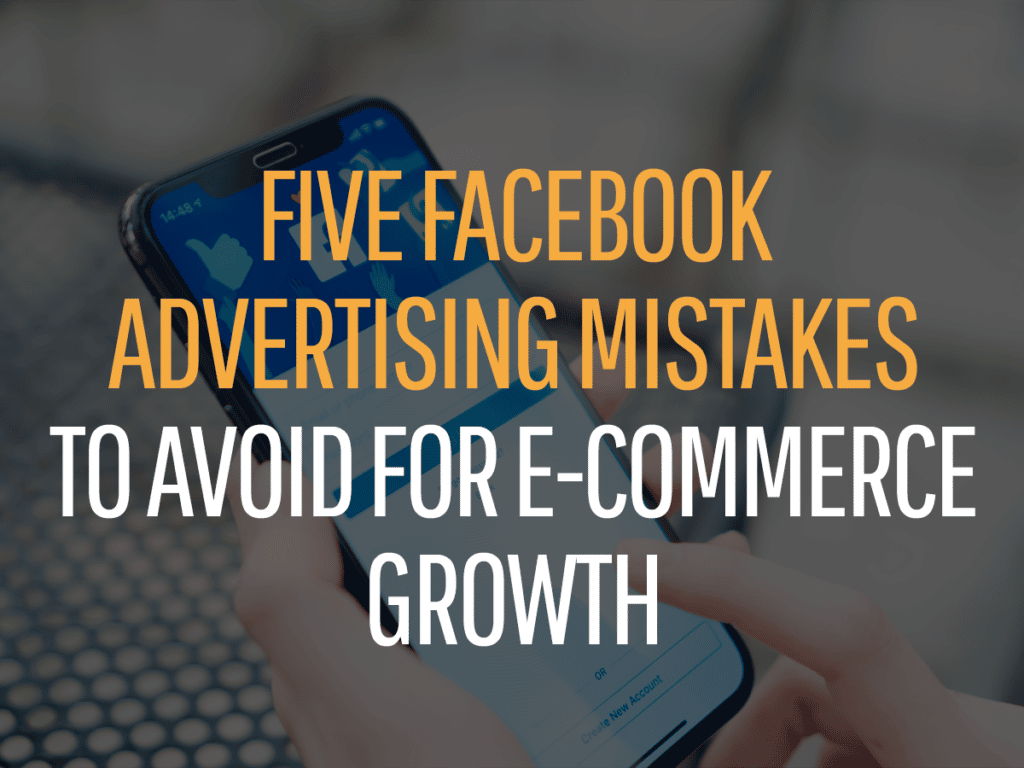Getting your Facebook ads to perform better could be as simple as making a few minor fixes to avoid these Facebook advertising mistakes
Businesses don’t spend their hard-earned money on Facebook advertising because it’s fun. The only reason to pay for ads is that you expect to get your money back — and then some — in the form of sales. But if you find you’re spending more money on ads than those ads are generating for you, Facebook might not be the problem.
Ads underperform because of several factors: maybe it’s the ad copy. It could be the offer itself. Or maybe there isn’t enough visual appeal to “stop the scroll” and get people to take action. We suggest starting with finding and fixing the following Facebook advertising mistakes:
1. Focusing Too Much on ROAS vs. CLV
Return on Ad Spend, or ROAS, is one of the most magnetic metrics for Facebook marketers. It’s considered among the most direct pieces of data that tells you exactly how much money you generated for every dollar you spent on ads. Facebook calculates ROAS like this:
Total Revenue / Total Ad Spend = ROAS
For example, if you spend $50,000 in a month and generate $150,000 in new sales, that’s a 3x ROAS.
However, there’s another important piece to the ROAS conversation that often goes overlooked: the total customer lifetime value. In many cases, a customer that responds to a paid social ad doesn’t disappear after just one purchase. Ideally, they’ll love your store and products so much that they’ll become a repeat customer. When you take this into account, the ROAS ratio becomes much greater.
Looking at Customer Lifetime Value (CLV) gives you a clearer insight into the larger picture of your Facebook advertising success. To understand how CLV plays into your overall advertising effectiveness, you can look at a few things:
First, pay attention to how many new customers your Facebook ads create vs. repeat customers. If they are repeat customers, look at how often they purchase because of an ad vs. on their own. Understand how much your customers are spending, what they’re buying, and how often they’re purchasing. When you know your CLV, you can look beyond short-term ROAS goals and instead focus on better media placement, product pricing, and audience targeting.
2. Using the Same Creative for Every Step of the Funnel
Someone who knows they have a need and is ready to take action on a product is at a very different stage in their journey than someone who has never heard of your brand before or hasn’t started exploring options to solve a problem. You’re having different conversations with your prospects depending on which stage of the funnel they’re in, which means that effective ads will use different language and visuals to cater to each group.
Using the same creative for all of your paid social ads without regard to the buyer’s journey might seem easier and cheaper. It doesn’t take as much thought or effort. But remember that input equals output: you’re only going to get out what you put into your Facebook ad campaigns. This means ditching the one-size-fits-all approach and tailoring your creative ads to your audience wherever they are in their buying journey.
HubSpot notes that the type of ad content you create should align with the stages of the buyer’s journey: Awareness, Consideration, and Purchase. For E-commerce B2C companies, these steps are usually moved through at a faster rate than in a B2B setting, all of which might take place in a single interaction.
For example, if you’re selling a new gadget, your Facebook ad might consist of a product demonstration video to raise awareness about the product or the problem it solves. If you decide to retarget people who click on your ad but don’t make a purchase, then you might consider presenting them with a coupon or discount to encourage them to buy.
3. Editing Campaigns Too Often
We all get anxious when we launch a new ad campaign. We put in a lot of effort to lay the groundwork, so when it looks like we’re not gaining any traction, it’s only natural that we start tweaking and refining to see if we can get better (and faster) results.
Experts advise not to do this too much, however, as every change you make puts you right back at the beginning. This is like putting a turkey into the oven, then taking it out after five minutes to see how much it’s cooked, then putting it in a different oven because you thought it wasn’t making enough progress.
Give Facebook a chance to optimize your ad. Something to keep in mind is that Facebook needs about 24 hours after every edit to your ad to adjust its performance. There are simply too many moving parts to handle manually. Plus, you can improve your ad performance when you know with confidence what’s working well and what’s not.
4. Overlapping Audiences
Did you know that you could be competing against yourself on Facebook? One way this happens is when you have overlapping audiences. For example, let’s say you have two ad campaigns, and both target some or all of the same audience. When this happens, Facebook is going to choose the ad campaign with the best performance and prevent the other one from competing.
Facebook does this to avoid driving up costs when two or more ads are competing for the same audience. You’re creating unnecessary competition, which can eat up your ad budget.
To find out if you have overlapping audiences, log into your Facebook ad manager and go to Audiences, then check the boxes for the audiences you want to compare. Then, click Actions, then Show Audience Overlap.
Having some overlap isn’t necessarily a bad thing, but the less overlap you have, the better all of your ads should perform.
5. Not Monitoring Ad Frequency
Are you showing your ads to the right people too often? Not enough? Ad frequency is a major concern, especially when you’re showing ads to the wrong people too often. When ad fatigue sets in, it drives up your costs and lowers your relevance scores, neither of which helps your conversion rate.
Make sure you set frequency caps to limit how often the same person sees your ad. Also, once someone takes action on your ad, remove them from your campaign so you’re not wasting ad dollars on someone who already converted.
We hope you’ve found these five tips helpful for avoiding these Facebook advertising mistakes. For more social media and marketing insights, head back to Our Collective POV.







